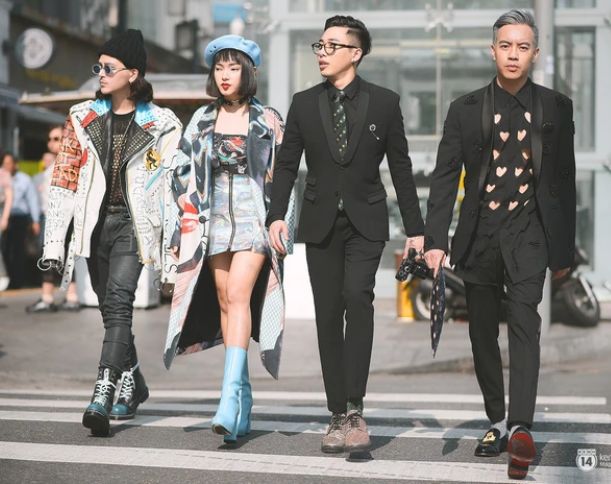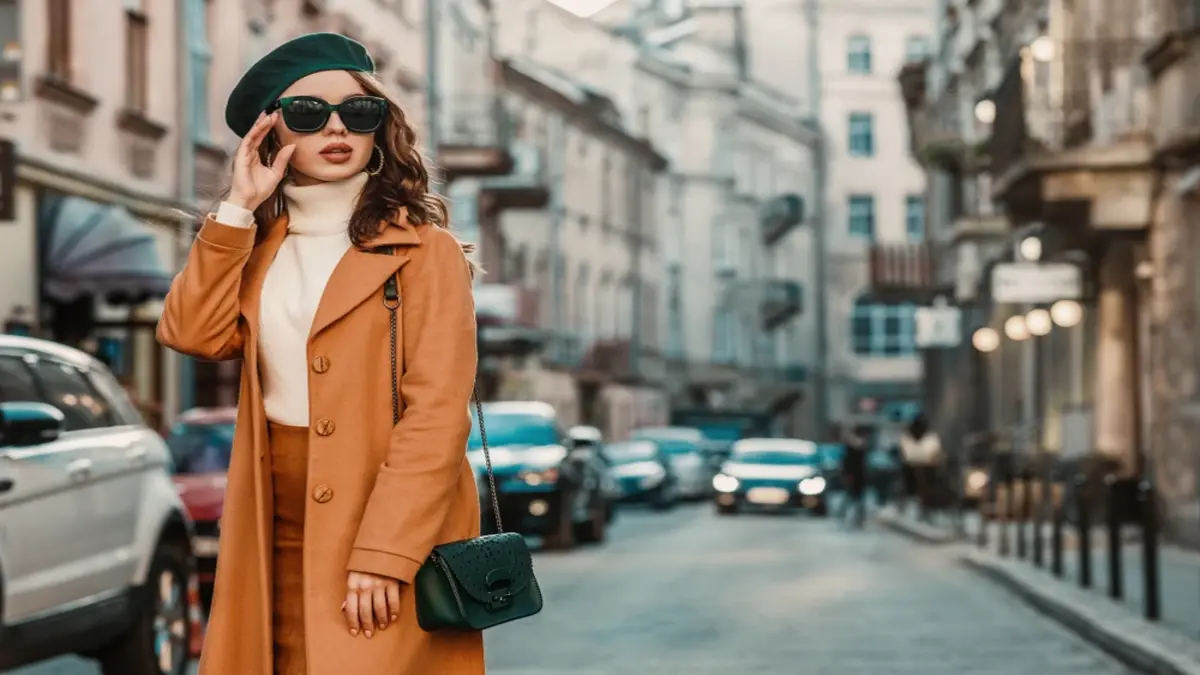Introduction
The term “fashionista” is more than just a trendy buzzword; it represents a lifestyle, a passion, and an influential role in the world of fashion. Whether you’re scrolling through social media, flipping through glossy fashion magazines, or attending high-profile runway shows, are the ones shaping the conversation around style and elegance. This article delves into the essence of being a the impact they have on the industry, and how you can embody this style-savvy persona yourself.
Defining the Fashionista
What Makes a Fashionista?
A fashionista is often defined as someone who is highly passionate about fashion and exhibits a keen sense of style. But it goes beyond just following trends—fashionistas set them. They have an intrinsic understanding of how to mix and match various pieces, how to create looks that are both innovative and wearable, and how to make a statement without uttering a single word.
Being a fashionista involves a deep appreciation for aesthetics. It’s about recognizing quality fabrics, understanding color theory, and knowing what works for different body types. It’s a lifestyle that encompasses a broad range of interests, from haute couture to streetwear, and everything in between.
The Evolution of Fashionistas

Historically, fashionistas have been influential figures in the world of fashion. In the past, they might have been wealthy socialites or prominent figures in high society. Today, the term is more democratized. With the rise of social media, anyone with a keen eye for style and a platform to share their looks can be considered a fashionista.
The evolution has also seen move beyond traditional fashion boundaries. They often blend different cultural influences, historical references, and personal anecdotes into their style. This blending of the old and new makes them not just trend followers but trendsetters who redefine what fashion can be.
Fashionista vs. Fashion Icon
It’s important to distinguish between a fashionista and a fashion icon. While both terms refer to influential figures in fashion, a fashion icon typically has a more enduring legacy, often becoming a legendary figure in the history of style. on the other hand, are more current and active in the ongoing dialogue of fashion trends. They may inspire others with their style, but they are also part of the contemporary scene, continuously evolving with the times.
The Influence of Fashionistas
Social Media and the Rise of Digital Fashionistas
In the digital age, social media platforms like Instagram, TikTok, and Pinterest have revolutionized the way share their style. These platforms allow them to reach a global audience instantly, showcasing their looks, providing fashion tips, and influencing trends in real time.
The visual nature of these platforms makes them ideal for fashion content. Instagram, with its emphasis on high-quality images and curated aesthetics, is particularly popular among fashionistas. It enables them to build a personal brand, collaborate with designers, and engage with a community of like-minded style enthusiasts.
The Impact on the Fashion Industry
Fashionistas have a significant impact on the fashion industry. Designers and brands often look to these trendsetters to gauge the direction of fashion trends. choices can drive sales, influence design decisions, and even lead to the revival of past trends. Their endorsements or critiques can make or break a new collection.
Moreover, fashionistas often act as intermediaries between high fashion and the public. They democratize fashion by making it more accessible and relatable. Through their blogs, social media posts, and appearances, they help bridge the gap between runway trends and everyday wear.
Celebrity Fashionistas and Their Influence
Celebrities who embrace the persona often have a massive influence on public style preferences. Their red carpet looks and casual street style are scrutinized by the media and emulated by fans. Celebrities like Rihanna, Zendaya, and Harry Styles have used their platforms to push fashion boundaries, setting new trends and redefining modern style.
Their influence is so profound that brands often collaborate with them to create exclusive collections or campaigns. This symbiotic relationship between celebrities and fashion brands helps to keep the fashion world dynamic and ever-changing.
Fashionistas and Personal Branding
Building a Fashionable Personal Brand
For many personal branding is crucial. It’s not just about what you wear but how you present yourself to the world. Building a personal brand involves curating a unique style that reflects your personality and values. This can be achieved through consistent aesthetics, thoughtful social media content, and strategic networking within the fashion industry.
A strong personal brand helps fashionistas stand out in a crowded field. It allows them to establish themselves as authorities in fashion and can open doors to various opportunities, such as collaborations, endorsements, and media appearances. It’s about creating a recognizable image that resonates with both the fashion community and the general public.
The Role of Authenticity
Authenticity is a key element in personal branding. Fashionistas who are true to themselves tend to be more successful and influential. Authenticity builds trust with followers and creates a deeper connection. Fashionistas need to remain genuine in their style choices and personal narratives, as this sincerity often translates into greater credibility and influence.
Fashionistas who focus on authenticity also tend to have a more engaged audience. People are drawn to individuals who are real and relatable, rather than those who simply follow trends without any personal touch. By sharing their unique perspectives and stories, can build a loyal following that values their individuality.
Networking and Collaborations
Networking is another vital aspect of building a personal brand as a fashionista. Connecting with other fashion professionals, attending industry events, and collaborating with brands can enhance visibility and credibility. Fashionistas often leverage these connections to access exclusive opportunities and grow their influence.
Collaborations with designers, photographers, and brands can help expand their reach and diversify their content. These partnerships can lead to exciting projects, such as capsule collections, exclusive interviews, or feature articles, all of which contribute to a stronger personal brand.
Fashionistas in Different Cultures
Global Perspectives on Fashionistas
Fashionistas are not confined to any one culture or region. They emerge from diverse backgrounds and bring their unique cultural influences to the world of fashion. From Tokyo to Milan, Paris to New York, each region has its interpretation of what it means to be a fashionista.
In Tokyo, for example, might embrace avant-garde styles and experimental looks, reflecting Japan’s reputation for cutting-edge fashion. In Paris, the focus may be on classic elegance and high couture, aligning with the city’s status as a fashion capital. Each cultural perspective enriches the global fashion narrative and contributes to a more diverse and inclusive industry.
The Influence of Cultural Heritage
Cultural heritage plays a significant role in shaping a fashionista’s style. Many draw inspiration from their cultural backgrounds, incorporating traditional elements into their modern looks. This fusion of heritage and contemporary fashion not only celebrates cultural diversity but also creates unique and innovative styles.
For instance, Indian fashionistas might blend traditional fabrics and techniques with modern silhouettes, creating a vibrant fusion that resonates with both local and international audiences. Similarly, African might incorporate bold prints and traditional craftsmanship into their wardrobe, making a statement about the richness of their cultural heritage.
Fashionistas and Cultural Exchange
Fashionistas often engage in cultural exchange, drawing inspiration from global fashion trends and incorporating them into their style. This exchange promotes cross-cultural understanding and appreciation, leading to a more interconnected and dynamic fashion world.
Cultural exchange also helps fashionistas to stay ahead of trends and innovate their looks. By embracing elements from different cultures, they can create fresh and exciting styles that push the boundaries of traditional fashion.
Becoming a Fashionista: Tips and Tricks
Developing Your Style
One of the first steps to becoming a fashionista is developing your unique style. This involves experimenting with different looks, identifying what works best for you, and cultivating a signature style that reflects your personality. Start by exploring various fashion trends and finding inspiration from fashion magazines, blogs, and social media.
Don’t be afraid to take risks and try new things. Fashion is about creativity and self-expression, so use your wardrobe as a canvas to showcase your individuality. Whether it’s a bold accessory or a distinctive color palette, let your style shine through.
Curating a Versatile Wardrobe
A key aspect of being a fashionista is having a versatile wardrobe that allows you to create a variety of looks. Invest in timeless pieces that can be mixed and matched, such as a well-fitted blazer, classic jeans, and versatile shoes. These staples can serve as the foundation for many different outfits.
Additionally, incorporate statement pieces that add personality to your wardrobe. These can be anything from a unique handbag to a pair of standout shoes. The combination of versatile basics and eye-catching accessories will enable you to create stylish and dynamic looks.
Staying Informed on Fashion Trends
To stay ahead in the fashion world, it’s important to stay informed about current trends. Follow fashion news, attend runway shows, and keep an eye on what’s happening in the industry. Subscribing to fashion magazines and blogs, as well as following influential fashionistas on social media, can help you stay updated on the latest styles and trends.
However, it’s equally important to interpret trends in a way that suits your style. Fashion is about personal expression, so while it’s great to be aware of trends, make sure they align with your aesthetic.
YOU MAY ALSO READ


